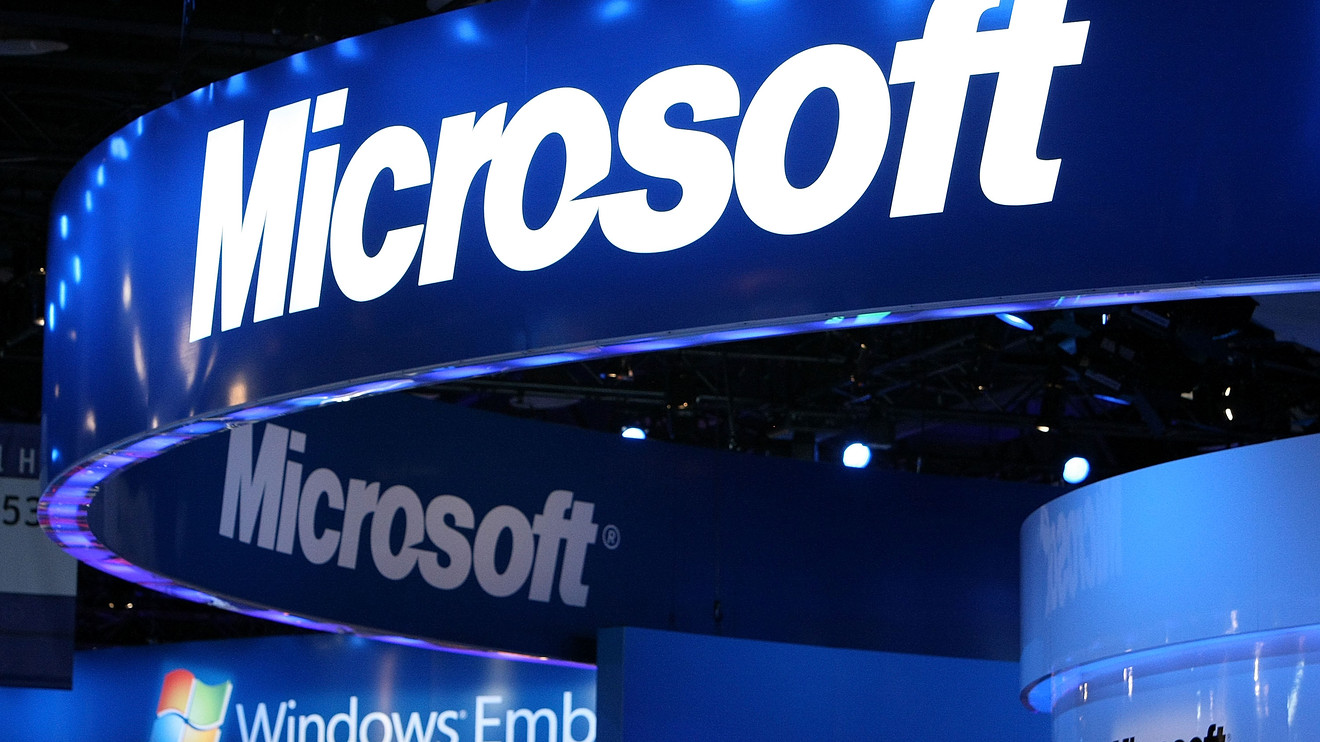Introduction
Welcome to the world of stock trading! If you’re new to the concept, you might be wondering what it’s all about and how you can get started. Stock trading involves buying and selling shares of publicly traded companies in the hopes of making a profit. One popular stock that many investors look to is Microsoft.
Microsoft is a technology giant, known for its software products and services. It has a strong presence in the tech industry and is considered one of the world’s most valuable companies. Investing in Microsoft stock can be an exciting and potentially lucrative venture.
In this article, we will explore the basics of stock trading, provide an overview of Microsoft stock, explain how Microsoft stock trading works, discuss the reasons to invest in Microsoft, highlight the associated risks, and provide tips for successful Microsoft stock trading.
Before we dive into the specifics, it’s important to note that stock trading comes with a level of risk. It’s crucial to conduct thorough research and seek professional advice when making investment decisions.
Now, let’s delve into the world of stock trading and discover why Microsoft stock might be an appealing investment option.
What is Stock Trading?
Stock trading, also known as equity trading, refers to the buying and selling of shares or stocks of publicly traded companies. When you purchase shares of a company, you become a partial owner of that business. The goal of stock trading is to generate profits by selling the shares at a higher price than what you paid for them.
Stock trading takes place in the stock market, which is a marketplace where buyers and sellers meet to trade securities. The stock market can be physical, like the New York Stock Exchange, or virtual, like the Nasdaq. Investors can participate in stock trading through stockbrokers, either online or through traditional brokerage firms.
The price of a stock is influenced by various factors, including the company’s financial performance, industry trends, market conditions, and investor sentiment. Investors analyze these factors to determine whether a particular stock is undervalued or overvalued, and then make their trading decisions accordingly.
There are two main types of stock trading: long-term investing and short-term trading. Long-term investing involves buying stocks with the intention of holding onto them for an extended period, typically years or even decades. This approach is commonly associated with building wealth over time through the growth of the company and the appreciation of the stock value.
Short-term trading, on the other hand, involves buying and selling stocks within a relatively short timeframe, usually days, weeks, or months. Traders who engage in short-term trading aim to take advantage of price fluctuations in the market, using various strategies such as technical analysis, chart patterns, and trading indicators.
Stock trading requires careful analysis, market research, and a deep understanding of the factors that can impact stock prices. It is important to note that investing in stocks comes with risks, including the potential loss of the invested capital. Therefore, it’s crucial to have a well-thought-out trading plan and to stay informed about market trends and developments.
What is Microsoft Stock?
Microsoft Corporation, commonly known as Microsoft, is a multinational technology company that develops, manufactures, and sells a wide range of software products and services. Founded by Bill Gates and Paul Allen in 1975, Microsoft has grown to become one of the most influential and successful companies in the world.
Microsoft stock represents ownership in the company and is traded on various stock exchanges, including the Nasdaq Stock Market under the ticker symbol MSFT. As of [current date], Microsoft has a market capitalization of [current market cap], making it one of the largest publicly traded companies globally.
The success and growth of Microsoft can be attributed to its diverse product portfolio and dominant market positions in several areas. The company is best known for its flagship software products, including the Windows operating system, which is widely used in personal computers worldwide.
In addition to its operating systems, Microsoft has a vast range of software offerings, such as Microsoft Office Suite, Azure cloud computing platform, Xbox gaming consoles, and various enterprise software solutions. These products and services have contributed to Microsoft’s consistent revenue growth over the years, making it an attractive investment option for many.
Furthermore, Microsoft has been actively expanding its presence in emerging technologies like artificial intelligence, cloud computing, and internet of things (IoT), positioning itself as a leader in the digital transformation era. This strategic focus on innovation and growth has resulted in Microsoft being a preferred choice for investors looking for long-term investment opportunities.
Microsoft has also shown a strong commitment to returning value to its shareholders through dividends and share repurchases. The company has a history of increasing dividends and implementing share buyback programs, instilling confidence among investors and demonstrating a dedication to shareholder returns.
Investing in Microsoft stock provides investors with the opportunity to participate in the company’s success and potentially benefit from its continued growth in the technology sector. However, it’s important to conduct thorough research, assess your risk tolerance, and consider seeking professional financial advice before making any investment decisions.
How Does Microsoft Stock Trading Work?
Microsoft stock trading involves buying and selling shares of Microsoft Corporation on the stock market. To understand how it works, let’s take a closer look at the process:
1. Stock Exchange: Microsoft stock is traded on stock exchanges such as the Nasdaq Stock Market under the ticker symbol MSFT. The stock market serves as a platform where buyers and sellers come together to trade shares.
2. Stockbroker: To trade Microsoft stock, you need to open an account with a stockbroker. Stockbrokers act as intermediaries between individual investors and the stock market. You can choose from traditional brokerage firms or online brokerage platforms.
3. Placing Orders: Once you have chosen a stockbroker, you can place orders to buy or sell Microsoft stock. There are different types of orders, including market orders, limit orders, and stop orders, each with its own characteristics and requirements.
4. Market Research: Before executing a trade, it’s essential to conduct thorough research on Microsoft and the stock market. This may involve analyzing financial statements, monitoring market trends, and staying updated on any relevant news or events that could impact the company’s stock price.
5. Order Execution: When you place a buy order for Microsoft stock, your stockbroker will attempt to execute the trade by matching it with a seller. The fulfillment of the order depends on various factors, such as the availability of active sellers and prevailing market conditions.
6. Stock Price: The price at which Microsoft stock trades is determined by the forces of supply and demand in the market. Factors such as company performance, industry trends, economic conditions, and investor sentiment can influence the stock’s price.
7. Monitoring and Managing: Once you own Microsoft stock, it’s important to monitor your investment and make informed decisions based on market conditions. You can track the performance of the stock through real-time stock quotes, charts, and financial news.
8. Capital Gains and Dividends: As a shareholder of Microsoft stock, you have the potential to earn capital gains if the stock price increases, allowing you to sell your shares at a higher price than what you paid. Additionally, Microsoft may pay dividends to its shareholders if the company decides to distribute a portion of its profits.
Remember, stock trading involves risk, and the value of Microsoft stock can fluctuate. It’s crucial to develop a trading strategy, set realistic expectations, and consider diversifying your investment portfolio to manage risk effectively.
Reasons to Invest in Microsoft Stock
Investing in Microsoft stock can be an appealing choice for various reasons. Let’s explore some of the key factors that make Microsoft a popular investment option:
1. Strong and Diverse Product Portfolio: Microsoft has a broad range of software products and services, including its widely used Windows operating system, Microsoft Office Suite, Azure cloud platform, and more. This diverse product portfolio provides the company with multiple revenue streams and the ability to adapt to changing market demands.
2. Market Dominance: Microsoft is a dominant force in several sectors, such as operating systems, productivity software, and cloud computing. Its Windows operating system has a significant market share, and the Microsoft Office Suite is widely recognized as the industry standard in productivity software. This market dominance gives Microsoft a competitive edge and the potential for continued growth.
3. Innovation and Technological Advancements: Microsoft has consistently demonstrated its commitment to innovation and staying at the forefront of technology. The company invests heavily in research and development to drive advancements in areas such as artificial intelligence, cloud computing, and emerging technologies. This dedication to innovation positions Microsoft for future growth opportunities.
4. Steady Revenue Growth: Microsoft has a track record of delivering strong financial performance and consistent revenue growth. The company’s ability to generate consistent profits and expand its market share contributes to its long-term sustainability as an investment.
5. Resilience and Adaptability: Microsoft has shown resilience in navigating changing market dynamics. The company has successfully adapted its business model to respond to shifting consumer needs and technological trends. Microsoft’s ability to innovate and evolve in the fast-paced tech industry is a testament to its strength as an investment choice.
6. Shareholder Value: Microsoft is committed to creating value for its shareholders. The company has a history of returning value to investors through dividends and share repurchases. This focus on shareholder value can make Microsoft stock an attractive option for income-focused investors.
7. Strong Leadership: Microsoft is led by experienced and visionary leaders who have guided the company’s growth and success. With Satya Nadella as CEO, Microsoft has embraced a culture of innovation and strategic decision-making that has contributed to its positive performance in recent years.
8. Global Presence: Microsoft operates on a global scale, serving customers and businesses in various industries worldwide. Its global reach and broad customer base provide stability and the potential for growth in diverse markets.
While these factors are compelling, it’s important to note that investing in any company’s stock carries risks. Market conditions, competition, and other factors can impact the performance of Microsoft stock. Therefore, it’s recommended to carefully evaluate your investment goals, risk tolerance, and seek professional financial advice before making any investment decisions.
Risks of Investing in Microsoft Stock
While investing in Microsoft stock offers potential rewards, it’s important to be aware of the associated risks. Here are some key risks to consider before investing in Microsoft:
1. Market Volatility: The stock market is prone to fluctuations due to various factors, including economic conditions, geopolitical events, and investor sentiment. Microsoft stock price can be affected by broader market volatility, leading to potential short-term fluctuations in its value.
2. Competition: The technology industry is highly competitive, and Microsoft faces competition from both established companies and emerging start-ups. Intense competition in areas such as cloud computing, productivity software, and operating systems could impact Microsoft’s market share and profitability.
3. Regulatory and Legal Risks: Operating in multiple jurisdictions subjects Microsoft to regulatory and legal risks. Changes in regulations or legal actions related to antitrust, data privacy, intellectual property, or other areas could impact the company’s operations and financial performance.
4. Technological Disruptions: The tech industry is known for rapid technological advancements and disruptive innovations. Microsoft’s success depends on its ability to adapt to emerging technologies and market trends. Failing to stay ahead of or successfully integrate new technologies could pose risks to the company’s growth prospects.
5. Dependency on Key Products: Microsoft’s financial performance is influenced by the success of its key products, such as Windows, Office Suite, and Azure. Any decline in demand or failure to innovate these products could negatively impact the company’s revenue and profitability.
6. Macroeconomic Factors: Macroeconomic factors, such as recessions, economic downturns, or changes in interest rates, can affect consumer and business spending patterns. Weak economic conditions can impact Microsoft’s sales and overall financial performance.
7. Currency Fluctuations: Microsoft operates globally, earning revenue in different currencies. Currency exchange rate fluctuations can impact the company’s financial results when converting foreign earnings back to the reporting currency (usually U.S. dollars).
8. Execution Risks: Successfully executing Microsoft’s strategic initiatives and managing large-scale projects can be challenging. Any missteps, delays, or failures in execution could impact the company’s reputation, financial performance, and investor confidence.
It’s worth noting that these risks are not exclusive to Microsoft and are inherent in investing in any individual stock. It’s important to carefully evaluate your risk tolerance, diversify your portfolio, and regularly monitor your investments. Seeking advice from a financial advisor can be beneficial in assessing and managing the risks associated with investing in Microsoft stock.
How to Buy Microsoft Stock
If you are interested in buying Microsoft stock, here are the steps to follow:
1. Research and Evaluation: Before purchasing Microsoft stock, it’s essential to research and evaluate the company’s financial performance, market position, and growth prospects. This can involve analyzing financial statements, studying industry trends, and reviewing analyst reports to make an informed investment decision.
2. Choose a Stockbroker: To buy and sell stocks, you need to open an account with a stockbroker. Consider factors such as fees, trading platforms, customer service, and research tools offered by different brokerage firms. You can choose from traditional full-service brokers or online discount brokers.
3. Open a Brokerage Account: Once you have selected a stockbroker, you will need to open a brokerage account. This typically involves providing personal information, completing necessary forms, and fulfilling any minimum deposit requirements specified by the broker.
4. Deposit Funds: After opening your brokerage account, you will need to deposit funds into the account. This can be done through bank transfers, wire transfers, or electronic fund transfers, depending on the options provided by your broker.
5. Place an Order: With funds in your brokerage account, you can place an order to buy Microsoft stock. Determine the type of order you wish to place, such as market order or limit order, and specify the quantity of shares you want to purchase.
6. Monitor
Tips for Successful Microsoft Stock Trading
Trading Microsoft stock can be a rewarding endeavor if approached with a well-informed and strategic mindset. Here are some tips to help you navigate the world of Microsoft stock trading:
1. Research and Stay Informed: Conduct thorough research on Microsoft, its products, and industry trends. Stay updated with the latest news, announcements, and financial reports. Being well-informed will help you make more educated trading decisions.
2. Develop a Trading Plan: Establish a clear trading plan that outlines your goals, risk tolerance, and investment strategy. This plan should include factors such as entry and exit points, stop-loss orders, and profit targets. Stick to your plan and avoid impulsive trades based on emotions.
3. Utilize Technical Analysis: Use technical analysis tools and indicators to identify patterns, trends, and potential entry or exit points for trading Microsoft stock. Charts, moving averages, and other technical indicators can provide insights into the stock’s price movements.
4. Manage Risk: Implement risk management strategies to protect your capital. Set appropriate stop-loss orders to limit potential losses and consider using position sizing techniques to manage your exposure to each trade. Diversification is also crucial to mitigate risk by spreading investments across different assets.
5. Follow Market Trends: Stay attuned to broader market trends and sentiments. Take into consideration factors such as market volatility, economic indicators, and geopolitical events, as they can impact the overall stock market and, consequently, Microsoft stock.
6. Learn from Mistakes: Every trader makes mistakes. Learn from your past trades to improve your decision-making. Analyze your successes and failures, identify patterns, and continuously refine your trading strategies.
7. Stay Disciplined: Emotions can influence trading decisions. Avoid making impulsive trades driven by fear or greed. Stick to your trading plan and avoid over-trading or chasing short-term price fluctuations. Maintaining discipline is key to long-term success.
8. Consider Fundamental Analysis: While technical analysis is useful, also consider fundamental analysis. Analyze Microsoft’s financial health, revenue growth, profitability, competitive positioning, and external factors that may impact its stock price. This information can provide a broader perspective on the potential future value of the stock.
9. Keep Realistic Expectations: It’s important to have realistic expectations about your trading outcomes. Avoid chasing quick gains and understand that stock trading involves risks. Set achievable goals and focus on consistent and sustainable long-term profits rather than trying to time short-term price movements.
10. Continuous Learning: The stock market is constantly evolving. Stay committed to learning and improving your trading skills. Attend webinars, read books, and follow reputable financial publications to stay up-to-date with the latest trends and strategies.
Remember, successful trading requires practice, discipline, and continuous learning. Be patient, adapt to changing market conditions, and be willing to adjust your strategies as needed. Consistency and a long-term outlook are key to maximizing your chances of success in Microsoft stock trading.
Conclusion
Investing in Microsoft stock can be an exciting opportunity for investors looking to participate in the growth and success of one of the world’s leading technology companies. With its strong product portfolio, market dominance, innovation, and steady revenue growth, Microsoft presents compelling reasons for investment.
However, it’s essential to be aware of the risks associated with investing in Microsoft stock, such as market volatility, competition, regulatory challenges, and technological disruptions. Understanding these risks and conducting thorough research is crucial to making informed investment decisions.
To buy Microsoft stock, you need to open a brokerage account and deposit funds. It’s advisable to develop a trading plan, stay informed with company news and market trends, and utilize tools like technical and fundamental analysis. Managing risk, being disciplined, and continuously learning are key to successful Microsoft stock trading.
As with any investment, it’s important to assess your risk tolerance, consult with a financial advisor if needed, and diversify your portfolio to mitigate risk. The stock market can be unpredictable, and past performance is not indicative of future results.
In summary, investing in Microsoft stock offers potential rewards but also carries inherent risks. By conducting thorough research, staying informed, and implementing sound trading strategies, you can maximize your chances of success in the dynamic world of Microsoft stock trading.

























